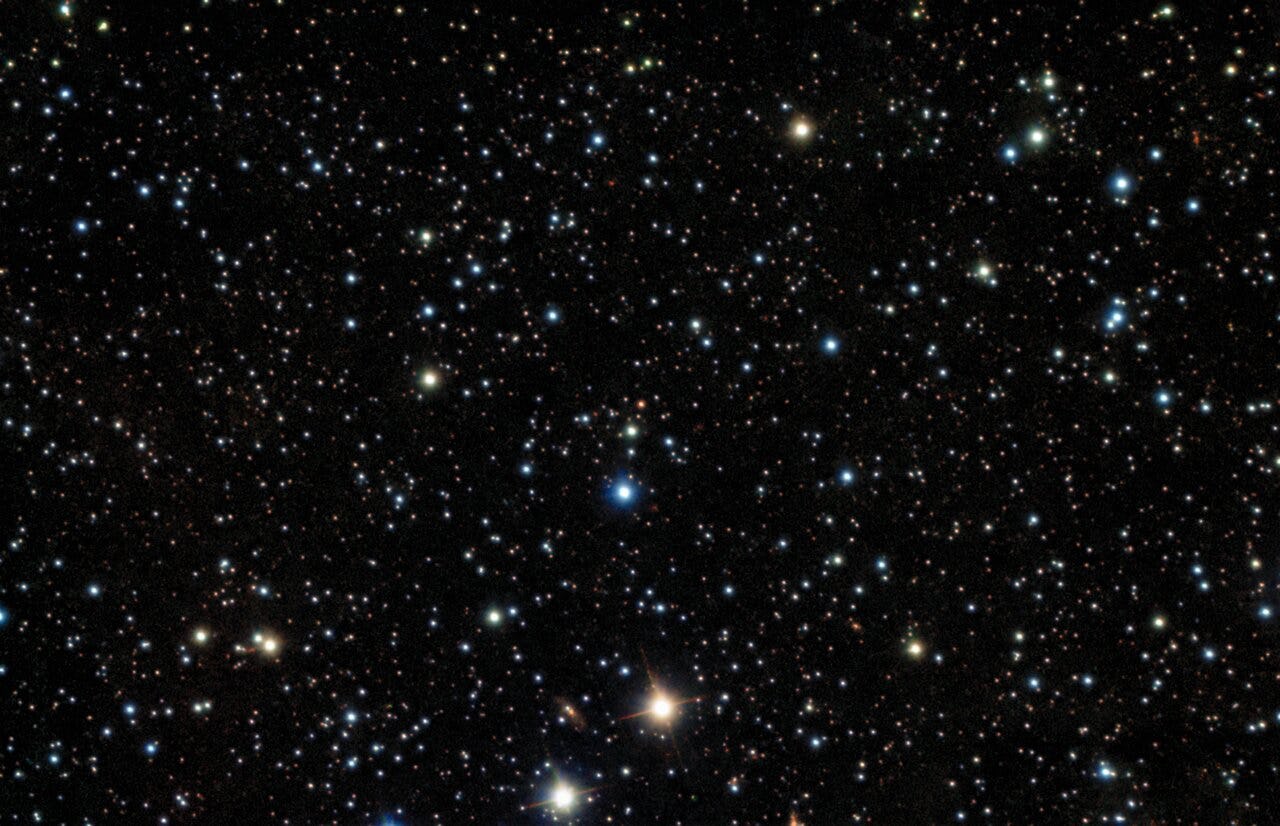
A powerful flash of radiation from a dying star sent astronomers into a flurry of fast-paced activity last week, as they raced to gather data on the explosion’s afterglow.
This image, made from data processed from the Gemini South Telescope in Chile, captured the fading glow of the brightest gamma-ray burst ever recorded, which will shine a bright light on some of the most mysterious phenomena in our universe.
What’s New — When massive stars die, they go out with a cosmic bang: their dramatic collapse triggers a gargantuan explosion called a supernova. Most supernovae leave behind a dense, burned-out husk called a neutron star, spinning rapidly at the heart of an expanding cloud of hot gas. But even more massive stars, at least two or three times the mass of our Sun, leave behind black holes, pinpoints of space packed so densely with matter that nothing, not even light, can escape their gravity.
As the black hole spins, its powerful magnetic field fires two high-speed jets of electrically-charged particles out into space from the black hole’s magnetic poles, like a rail gun but on a cosmic scale. Those jets of particles move at almost the speed of light, and when they collide with the supernova’s expanding cloud of gas, they produce a brief but brilliant flare of high-energy radiation: X-rays and gamma rays.

These flares are called gamma-ray bursts, and astronomers get very excited about them — not just because giant cosmic explosions are undeniably awesome, but because they can shed light (literally) on how black holes form, how supernovae forge heavy elements, and even how dark matter works. And this one, affectionately dubbed GRB 221009A, is the closest and brightest gamma-ray burst astronomers have ever seen.
“When you look at the thousands of bursts gamma-ray telescopes have been detecting since the 1990s, this one stands apart,” says Northwestern University astronomer Jillian Rastinejad of the recent burst, in a statement. “In our research group, we’ve been referring to this burst as the BOAT, or Brightest Of All Time.”
Why It Matters — Life comes at you fast, but astronomy usually doesn’t. Most things in the universe operate on a cosmic timescale, which means they move so slowly that they appear to be unchanging — at least to us humans with our mayfly lifespans. Supernovae are among the few cosmic events that happen fast enough that we can actually see them happening, and gamma-ray bursts happen in a matter of seconds.
That’s why modern astronomy has a whole infrastructure dedicated to detecting and studying gamma-ray bursts and their afterglow as quickly as possible. From orbit, NASA’s Fermi Gamma-ray Space Telescope and Neil Hehrels Swift Observatory (formerly called the Swift Gamma-ray Burst Explorer) both scan the skies for the bright flare of a gamma-ray burst. Swift can watch the gamma rays fade into X-rays.
When these spaceborne sentries spot a gamma-ray burst, they quickly tell astronomers where to look in the sky. Information about the burst’s location goes onto NASA’s Gamma-ray Coordinates Network, so astronomers here on Earth can point their telescopes at the right patch of sky to gather data on the burst’s fading afterglow as it shifts to progressively longer, lower-energy wavelengths.
That’s exactly what Rastinejad and her team, as well as astronomer Brendan O’Connor of the University of Maryland and George Washington University, and his team, did. Within a few days of the October 9 burst, both astronomers and their research teams hopped onto the National Science Foundation’s Gemini South telescope in Chile to study the afterglow with two instruments.
O’Connor’s team observed the fading flare with a near-infrared spectrometer called FLAMINGOS-2 (an instrument similar to NIRSpec on the James Webb Space Telescope). And a few minutes later, Rastinejad’s team gathered more data with the Gemini Multi-Object Spectrograph.
What’s Next — “Because this burst is so bright and so nearby, we think this is a once-in-a-century opportunity to address some of the most fundamental questions regarding these explosions, from the formation of black holes to tests of dark matter models,” says O’Connor.
Studying gamma-ray bursts like GRB 221009A could also help astronomers like O’Connor, Rastinejad, and their respective teams learn more about where the universe’s heaviest material (every element heavier than iron) comes from.
Heavy elements are forged in the intense heat and pressure of supernovae, but astrophysicists aren’t yet sure if that only happens in the specific kind of supernova triggered when two neutron stars collide (it’s called a kilonova, and it’s pretty dramatic even by supernova standards), or if supernovae like the one that fired off GRB 221009A can also forge iron and heavier matter.
Another question Rastinejad’s team hopes to answer with their new data, and with more to be collected as the flare fades through the lower-energy wavelengths of light, is exactly what made this particular gamma-ray burst so bright and so powerful.







